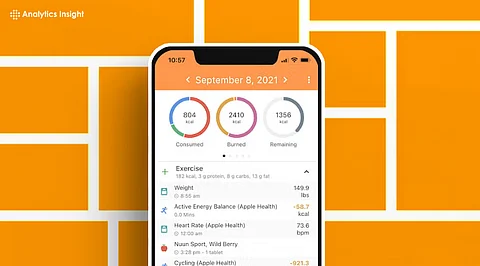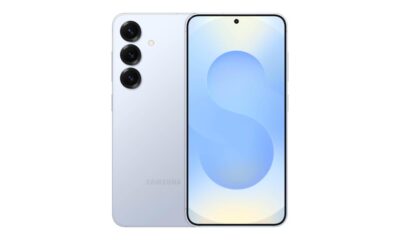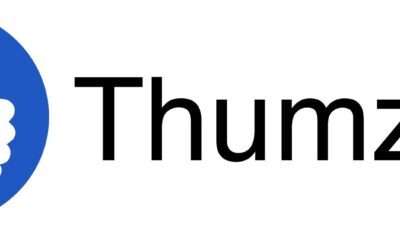Technology
Discover the Top 10 Calorie Counting Apps of 2025

Calorie counting has evolved into a significant aspect of health management, with a new generation of apps emerging in 2025 to offer better tracking and smarter features. These applications cater to various user preferences, from those seeking detailed nutritional insights to individuals who desire a simple and user-friendly interface.
The best app for calorie counting is one that seamlessly integrates into daily routines and fosters sustainable habits. Many users experience challenges with untracked meals, hidden snacks, and forgotten drinks, which can hinder their health goals. Calorie-counting apps address these issues by providing insights into actual food consumption.
Top Calorie Counting Apps to Consider
The following list highlights ten of the most effective apps available this year, each with unique strengths tailored to different user needs.
MyFitnessPal stands out with its extensive food database of over 14 million items. The app simplifies logging with fast barcode scans and tracks key nutrients such as protein, carbohydrates, fats, and vitamins. Its compatibility with most fitness trackers allows for streamlined progress monitoring.
Ideal for those focused on simple daily tracking, MyFitnessPal’s strength lies in its seamless integration with wearables and smart devices.
Cronometer offers an in-depth analysis of nutritional intake, tracking over 80 nutrients with verified data. While it is user-friendly, it also provides advanced features for those with specific dietary goals. Custom recipes, fasting logs, and daily charts enhance the user experience.
This app is particularly beneficial for individuals seeking comprehensive nutrition tracking, especially given its ability to log micronutrients even in the free version.
The app Snap It allows users to log meals quickly using smart image detection technology. Along with barcode scans and daily goals, it supports community challenges to help maintain motivation. Device syncing provides real-time activity tracking, enhancing overall balance.
Ideal for visual loggers and casual trackers, Snap It’s strength lies in its ability to facilitate fast entries without the need for manual searches.
For budget-conscious users, FatSecret delivers robust meal tracking features at no cost. The app includes macro charts, a barcode scanner, and reports on calorie trends and weight progress. It also fosters a sense of community with its in-app social features.
FatSecret excels in providing essential tools without hidden fees or paywalls, making it a practical choice for those monitoring their health on a budget.
Noom takes a unique approach by focusing on behavior change alongside food tracking. The app incorporates daily psychological lessons based on cognitive behavioral therapy (CBT), designed to enhance self-awareness and improve eating habits. Users benefit from habit logs, coaching guidance, and challenges aimed at promoting consistency.
This app is ideal for emotional eaters and those looking to change their habits, with personalized coaching rooted in clinical techniques.
The app HealthifyMe is particularly useful for users seeking to track Indian meals. Its smart nutrition assistant, Ria, provides instant dietary tips, while human coaches offer deeper insights. HealthifyMe tracks macros, calories, and even hydration levels, integrating easily with wearables.
With a rich database tailored to Indian cuisine, it is an excellent option for users with holistic dietary goals.
Yazio is designed for users who prefer structure and routine in their meal planning. It includes a fasting timer, recipe ideas, and nutrition analysis, helping users to organize their meals effectively. Visual progress charts simplify tracking and cover everything from calorie intake to body measurements.
Yazio’s balanced interface caters to disciplined planners aiming for comprehensive dietary management.
For those who appreciate simplicity, Lifung provides an uncluttered design focused on essential features. Users can set goals and track progress through daily summaries, with options for data exports for personal use.
Its functional design appeals to individuals who prioritize straightforward tracking without unnecessary complexity.
The innovative app Cal AI utilizes camera-based food recognition to facilitate quick tracking. Users can estimate calories, macros, and portion sizes by simply snapping a photo, making it suitable for those who prefer minimal input. As it learns from user corrections, its accuracy improves over time.
Cal AI is an excellent option for busy individuals seeking efficient, photo-based logging.
Finally, MacroSnap distinguishes itself by offering automatic meal recognition and lifetime access without ongoing fees. The structured coaching feature supports users who prefer guidance in their tracking journey.
In a world where health management tools are abundant, finding the right calorie counting app is essential. It is important to choose a tool that fits seamlessly into daily life, making tracking feel less like a chore and more like a supportive companion. Free versions of these applications allow users to experiment and identify what works best for their lifestyle.
Calorie tracking is more than just a trend; it is a practice that can lead to lasting habits when supported by the right app. With the right tools, users can transform their efforts into tangible progress and healthier lifestyles.
-

 Health3 months ago
Health3 months agoBella Hadid Shares Health Update After Treatment for Lyme Disease
-

 Health3 months ago
Health3 months agoErin Bates Shares Recovery Update Following Sepsis Complications
-

 Technology4 months ago
Technology4 months agoDiscover How to Reverse Image Search Using ChatGPT Effortlessly
-

 Technology1 month ago
Technology1 month agoDiscover 2025’s Top GPUs for Exceptional 4K Gaming Performance
-

 Technology3 months ago
Technology3 months agoElectric Moto Influencer Surronster Arrested in Tijuana
-

 Technology5 months ago
Technology5 months agoMeta Initiates $60B AI Data Center Expansion, Starting in Ohio
-

 Technology5 months ago
Technology5 months agoRecovering a Suspended TikTok Account: A Step-by-Step Guide
-

 Health4 months ago
Health4 months agoTested: Rab Firewall Mountain Jacket Survives Harsh Conditions
-

 Lifestyle5 months ago
Lifestyle5 months agoBelton Family Reunites After Daughter Survives Hill Country Floods
-

 Technology4 months ago
Technology4 months agoHarmonic Launches AI Chatbot App to Transform Mathematical Reasoning
-

 Health3 months ago
Health3 months agoAnalysts Project Stronger Growth for Apple’s iPhone 17 Lineup
-

 Technology3 months ago
Technology3 months agoUncovering the Top Five Most Challenging Motorcycles to Ride






















